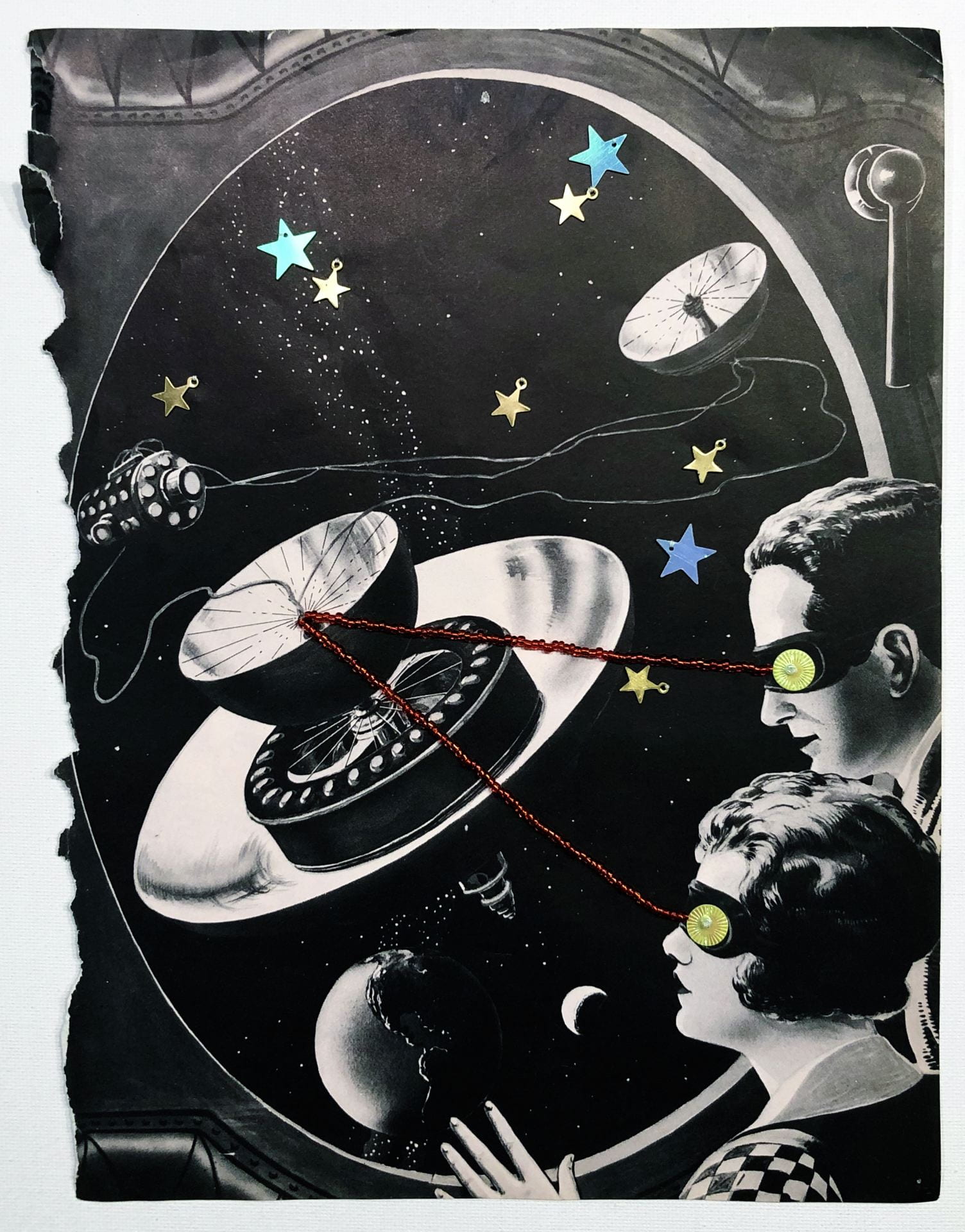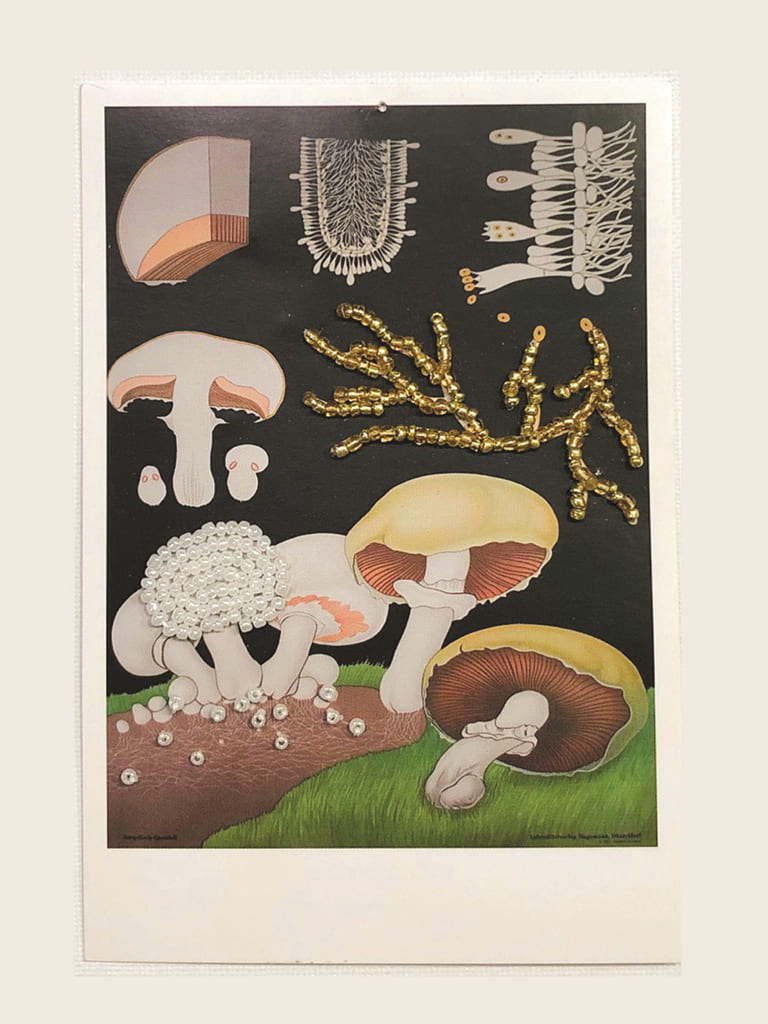Jackie Andrews ’20, is set to graduate this fall with a BFA in Art + Design and a concentration in sculpture and a minor in art 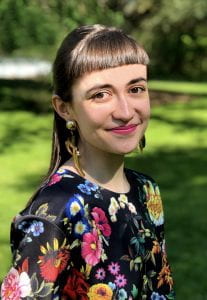 history. She recently became the recipient of the very competitive Undergraduate Research and Creative Inquiry grant from TU. Check out what Jackie will be doing this summer.
history. She recently became the recipient of the very competitive Undergraduate Research and Creative Inquiry grant from TU. Check out what Jackie will be doing this summer.
Gastronaut is a continuation of and elaboration upon a semester-long independent study from the fall 2019 semester. The project arose from a burgeoning interest in culinary anthropology and its relationship to the arts after I attended a lecture by guest-speaker Anna Fitzgibbon, founder of OutGrowth, an agricultural/cultural collaborative business. This lecture inspired me to study connections between my art historical interests and my culinary interests. I cast a wide net and explored a diverse range of topics within culinary history as it related to art and art history, including, but not limited to: domesticity and feminism as it relates to food; food sustainability as it relates to food equity and security; and the cultural impact of technological innovation on the food industry from the mid-twentieth century forward.
As these culinary art historical inquiries consumed my academic study, these topics also found their way into my studio work. With such broad-ranging interests in food and the sociopolitical issues related to it, in addition to my increasingly conceptually relevant studio work, it became more difficult to distill my myriad sources and excitement into one concise thesis. It became clear that a more creative and less conventional solution was needed. In seeking this creative solution, an idea for a research-and-studio hybrid, organized to reference the form of a “menu”, sprang forth. The “menu” format provided a concise and impactful format through which to present and synthesize cursory investigation of a myriad of research inquiries and sources, supplemented with artworks of my own creation, inspired by my findings.
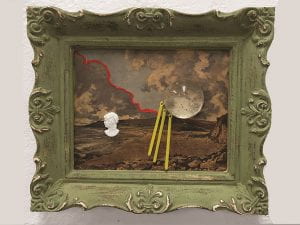
With a summer research grant, I will explore themes of kitsch, nostalgia, collection, and gender roles in the pieces I create. My works are meant to evoke memories and subtly engage the art historical canon with a touch of wit. This body of work (originating during this initial period of research) will consist of a series of material interventions on vintage ephemera, adorned with beading, found objects, textile embellishments, and collage. These interventions serve to re-contextualize the found images and create dialogue and narrative with the other images in the series, as well as with the viewer.
The paper ephemera I plan to use in my work is primarily mined from vintage books, the majority of which were published in the 1950s and 1960s. Most of the 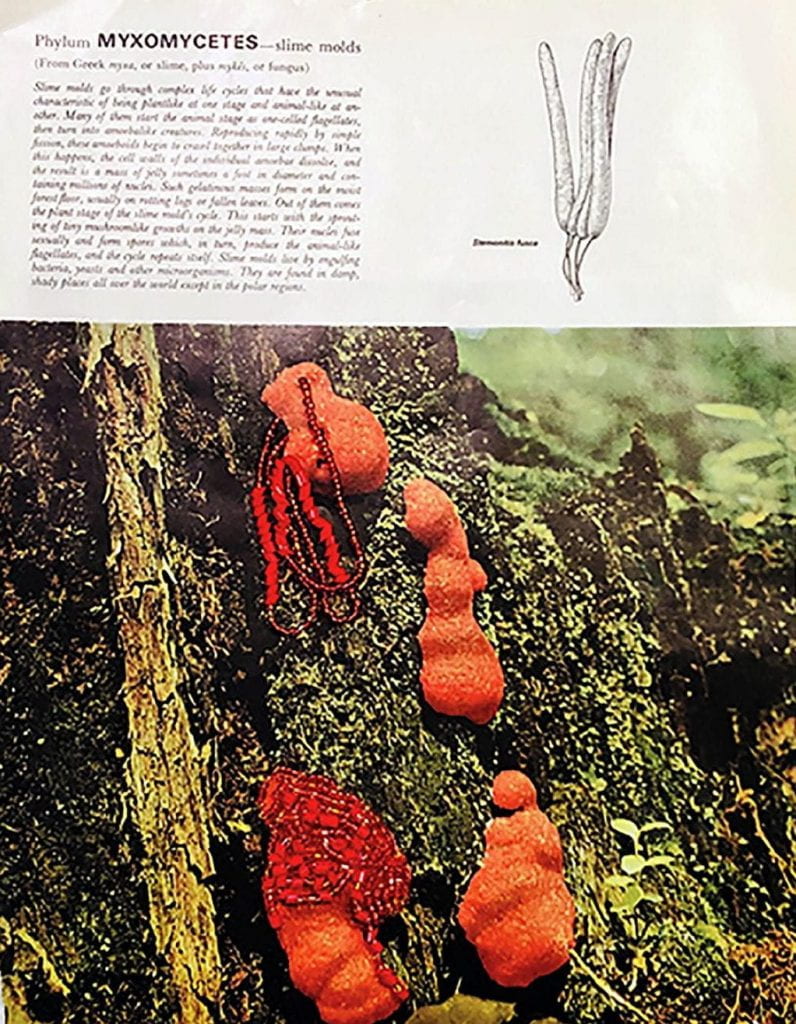 images I will work with reference science, technological innovation, and domestic life of this period. The cultural history of these publications is central to the thematic elements of the work. Technological developments of the 50s like the vacuum and culinary staples such as Jello befit an America daydreaming of space travel. An ultimately small, but important, cultural element of this period was the rise of science fiction. Born from the political climate of mid-century America, science fiction was subliminally propagandistic: the cookie-cutter domestic American life was the quintessential setting, perpetually being threatened by an alien (read: foreign) invader. The subsequent artworks I will create with the ephemera I acquire explores this idea, featuring themes of decadence, superfluity, the paranormal, and the unknown. As I create these initial science fiction inspired artworks, the images I gravitate toward and the objects I will create from them help to elucidate my core interests from my culinary art historical research, and the final ingredient of my hybrid “menu.” Gastronaut explores the intersection among science fiction, art history, and culinary history. Utilizing an anthropological study of American culture through historical, aesthetic, and culture materials, the resulting artworks will serve to reveal the xenophobic underpinnings of mid-century America, that are a common thread between the art and design, food and advertising, and domestic trends of the time.
images I will work with reference science, technological innovation, and domestic life of this period. The cultural history of these publications is central to the thematic elements of the work. Technological developments of the 50s like the vacuum and culinary staples such as Jello befit an America daydreaming of space travel. An ultimately small, but important, cultural element of this period was the rise of science fiction. Born from the political climate of mid-century America, science fiction was subliminally propagandistic: the cookie-cutter domestic American life was the quintessential setting, perpetually being threatened by an alien (read: foreign) invader. The subsequent artworks I will create with the ephemera I acquire explores this idea, featuring themes of decadence, superfluity, the paranormal, and the unknown. As I create these initial science fiction inspired artworks, the images I gravitate toward and the objects I will create from them help to elucidate my core interests from my culinary art historical research, and the final ingredient of my hybrid “menu.” Gastronaut explores the intersection among science fiction, art history, and culinary history. Utilizing an anthropological study of American culture through historical, aesthetic, and culture materials, the resulting artworks will serve to reveal the xenophobic underpinnings of mid-century America, that are a common thread between the art and design, food and advertising, and domestic trends of the time.
My primary goal, for the purposes of this application, is a holistic expansion of the Gastronaut project. My research inquiries during my independent study have whet my appetite for these topics, rather than satiated my hunger; the ability to dedicate three additional months of time and funding to my combined culinary art historical research and studio work on Gastronaut would be an unparalleled opportunity for my career as art history scholar and studio artist.

Over the 12-week grant period, I plan to split my time equally between research inquiry and studio work in my home studio, completing roughly 10-12 hours of each per week. I aim to complete a series of between 25 and 40 artworks, varying in size and taking the form of both paper collage and sculpture. The research portion of the project will be divided over the course of the grant period as well, with the first half of the grant period (roughly June through mid or late July) consisting primarily of gathering of additional sources and extensive research and note-taking, followed by a period of devoted analysis, synthesis and writing for the remainder of the summer. I plan for the resultant artworks to be displayed in the Center for the Arts Storage Space Gallery, following the completion of the grant period in the fall. The research essay will serve as a companion to the artworks, and will remain in the format of a menu, with additional sections to accommodate expanded research.
The dedicated initial funding of $3,500 will be utilized for the purchase of materials for both the studio and research portions of the project. Such expenditures will include: purchase of historically relevant ephemera, found objects, and raw material (i.e. textiles, beads, etc) for artworks; purchase of books, other media, and/or any associated fees for consumption of digital media (i.e. documentaries) for research; and any additional associated costs as needed. The remaining funds ($1,500) will be dedicated to the necessary completion of the project including: professional design and printing of the research essay; professional photography of artworks; exhibition installation supplies; and/or costs for the creation of a digital exhibition and website, in the event that campus remains closed due to the COVID-19 crisis.
